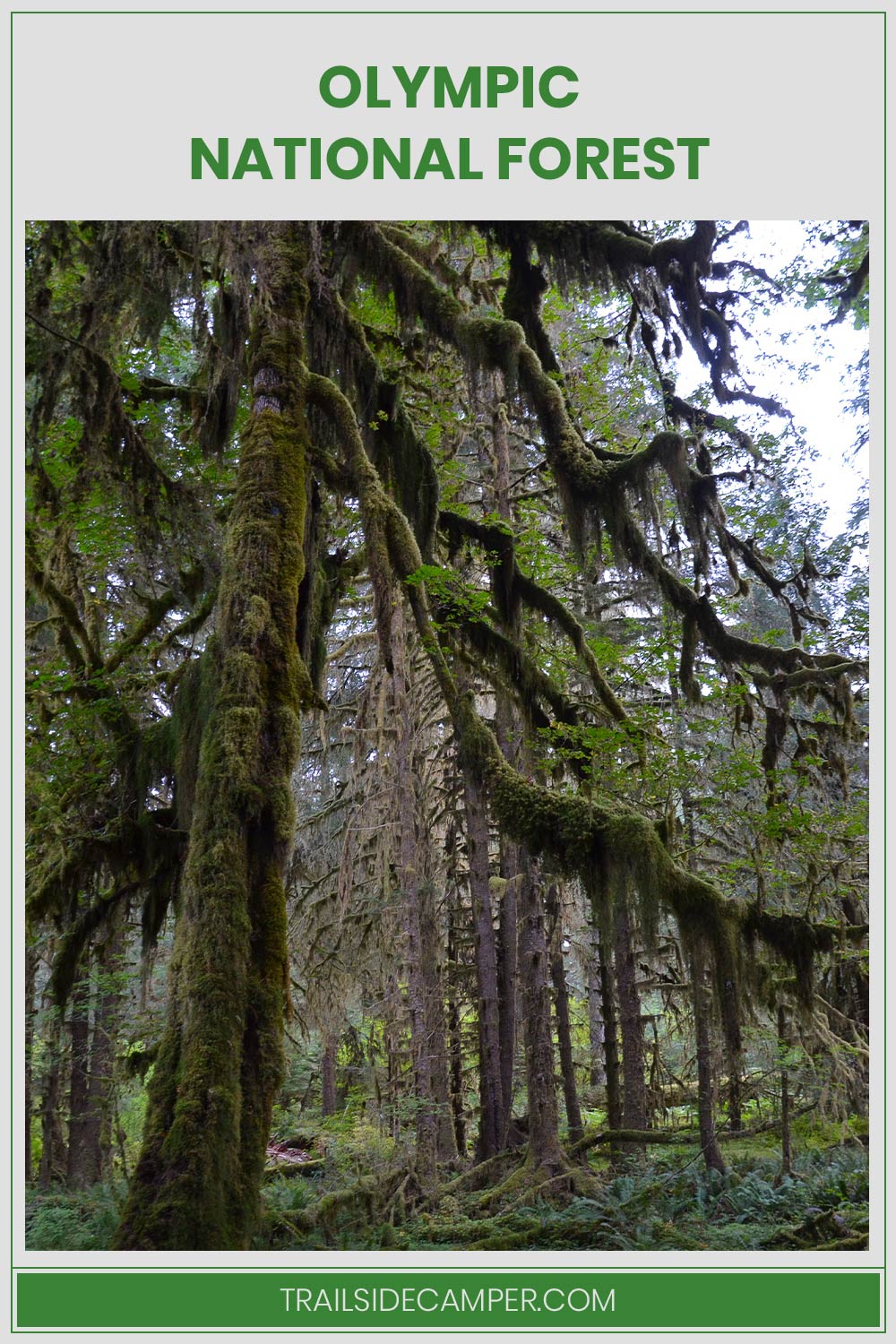Yes! Dispersed camping is allowed in Olympic National Forest. If this is your first time hearing about it, dispersed camping is an affordable alternative to traditional campgrounds.
It even goes one step further than primitive campsites in traditional campgrounds. Dispersed camping is a free camping option.
Are you ready to go almost completely off-grid and be completely self-contained and sufficient in the b backwoods? Then dispersed camping is for you, and you can’t find a more beautiful destination than Olympic National Forest.
Where Can You Camp There?
There are two dispersed camping areas in Olympic National Forest, Dosewallips Area and Hamma Hamma Area. Both are distinctive while offering everyone a fantastic camping experience.
The low-elevation region of the Dosewallips River Basin progressively ascends to the Olympic Mountains’ ridges. You’ll be surrounded by forests of fir and western white pine trees.
As you climb, you’ll find yourself in lush alpine meadows at the highest elevations. The Hamma Hamma Area encompasses post-fire regenerative forests, as well as old-growth forests.
Alpine lakes, meadows, and rocky mountain outcrops beckon novice adventurers and skilled outdoorsmen. In both locations, dispersed camping is allowed anywhere that is ¼ mile away from any developed recreation site and 200 feet from any water source.
Your site must not be visible from roads and trails. Find a site that is already established, or choose a new site if you wish. The Olympic National Forest offers over 15 traditional campgrounds to choose from and dispersed camping options.
For How Long Can You Stay?
Well, how long do you have? As a rule, dispersed camping in Olympic National Forest is limited to 14 consecutive days within any 30 days period. However, this does coincide with time length limits for other campgrounds within the Olympic National Forest.
Do You Need Reservations to Stay There?
Always check with the Information Center in the area you wish to camp. They will be able to confirm if, yes, you need reservations or no, you won’t need reservations.
However, many of the dispersed camping areas are first come, first served. Traditional campgrounds offer campsites on a first come, first serve basis.
What is the Best Time of Year to Camp in the Olympic National Forest?
Many factors will affect your decision on what time of year to camp in the Olympic National Forest. As always, choosing the best time is subjective. Some folks don’t mind camping in the rain, and some don’t mind the snow.
Conversely, some may choose to camp in only arid conditions. Keeping your preferences in mind, if you don’t enjoy camping in damp conditions, you might want to reconsider camping in the PNW, as it is generally damp.
Though on average, July and August are the driest months in Washington State, particularly in Western Washington. Overall, Western Washington has a fairly moderate climate.
Summers can be warm, usually not rising above 79°F. It seldom snows in Western Washington. However, winter temperatures can still dip into 20°F and 30°F.
Though, in the Olympic Mountain range, which is home to The Olympic National Forest, snow is quite common. So again, July and August would be the most favorable months to camp in the Olympic National Forest.
Do Campgrounds in Olympic National Forest Fill Up?
Olympic National Forest is a very popular destination. Campsites here fill up quite quickly, especially during the warmer summer months. Also, families are more inclined to vacation during the summer when school is out.
On the other hand, the forest encompasses 633,600 acres. That is a lot of lands to fill with dispersed campers.
There are many popular dispersed camping areas that may become somewhat crowded, but just head to some lesser-known areas, and you should have plenty of room and privacy on your camping adventure.
Final Thoughts on Dispersing in Olympic National Forest
Olympic National Park and Olympic National Forest are two different entities. The National Parks Service runs the National Park, and the National Forest is run by the US Department of Agriculture and managed by the US Forest Service.
Each has different rules and regulations for what you can and cannot do within their boundaries. Always check the requirements for utilizing either before visiting.
To close and the most important part of camping anywhere is to leave your site better than you found it.
Clean up after yourself, and yes, even after those who came before you return dispersed camping areas to their natural state. Respect the resources afforded to us by the vast and beautiful land. And, as always, happy camping!

